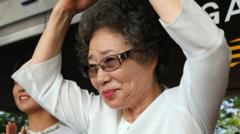The rise of Cagongjok in South Korea has stirred a debate among cafe owners as students and workers increasingly occupy seats for hours, prompting chains like Starbucks to regulate long stays and ensure a balance between studying and socializing in their establishments.
"Cafes in South Korea Confront Workspace Takers: The Cagongjok Phenomenon"

"Cafes in South Korea Confront Workspace Takers: The Cagongjok Phenomenon"
South Korean cafes grapple with the influx of students and workers setting up extensive workstations, leading to the implementation of new guidelines.
In the affluent Seoul neighborhood of Daechi, Hyun Sung-joo, a cafe owner, faces a growing challenge as the trend of Cagongjok, predominantly young Koreans who utilize cafes as study or work spaces, gains traction. One infamous case involved a customer who set up two laptops and a six-port power strip in a single day, prompting Sung-joo to block off power outlets to safeguard his business. With steep rental prices in Daechi, he expresses concern over customers monopolizing seats for extended periods.
The Cagongjok phenomenon is exceptional in South Korea, where students and working professionals occupy cafes more extensively than in other nations, such as the UK, where study and socialization are somewhat more balanced. Recently, Starbucks Korea issued a warning regarding the rising trend of customers bringing desktop monitors and large equipment into their cafes while leaving tables unattended.
As a response to these "extreme cases," Starbucks has launched nationwide guidelines designed to enhance the customer experience without directly asking patrons to leave. Despite these measures, many Cagongjok still frequent cafes like Starbucks, enjoying the conducive atmosphere for study and work.
One young student, preparing for the crucial university entrance exam, reported spending nearly 12 hours at a Starbucks, often stepping out for meals, leaving her belongings unattended at the table. Although Starbucks has claimed a reduction in bulky setups post-guideline implementation, customers still tend to leave desks occupied for long stretches.
Public reception of the new policies has been mixed; many welcome a return to a more traditional cafe use, particularly those seeking a social environment, while a minority argue that the changes are excessive and represent a shift from the chain's previously lax stance.
The discussion surrounding Cagongjok mirrors a broader conversation in South Korea about the pressures on young people in a hyper-competitive society. As coffee shops proliferate—reportedly nearing 100,000 in the last five years—more than two-thirds of recent Gen Z job seekers indicate they study in cafes weekly.
Independent cafes share varying strategies in managing space. While some embrace long-term study habits, others limit time spent on work at their tables due to complaints about overcrowding. One Jeonju cafe owner, citing frequent monopolization of cafe space, instituted a "No Study Zone" policy after acknowledging that a few patrons could reduce the seating availability for many.
The cultural preference for cafes over libraries or home study reflects deeper social dynamics. A 29-year-old cafe-goer recounted how the often-chaotic environment at home led her to find solace in cafes, which she perceives as safer and more welcoming.
Professor Choi Ra-young, an educator with long-standing research in lifelong learning, describes Cagongjok as a cultural manifestation of the intense pressure placed on the youth by contemporary South Korean society. According to Choi, accommodating this aspect of youth culture while preserving communal aspects of cafe usage is crucial if they are to address the broader issue of public space availability for studying and working.

















